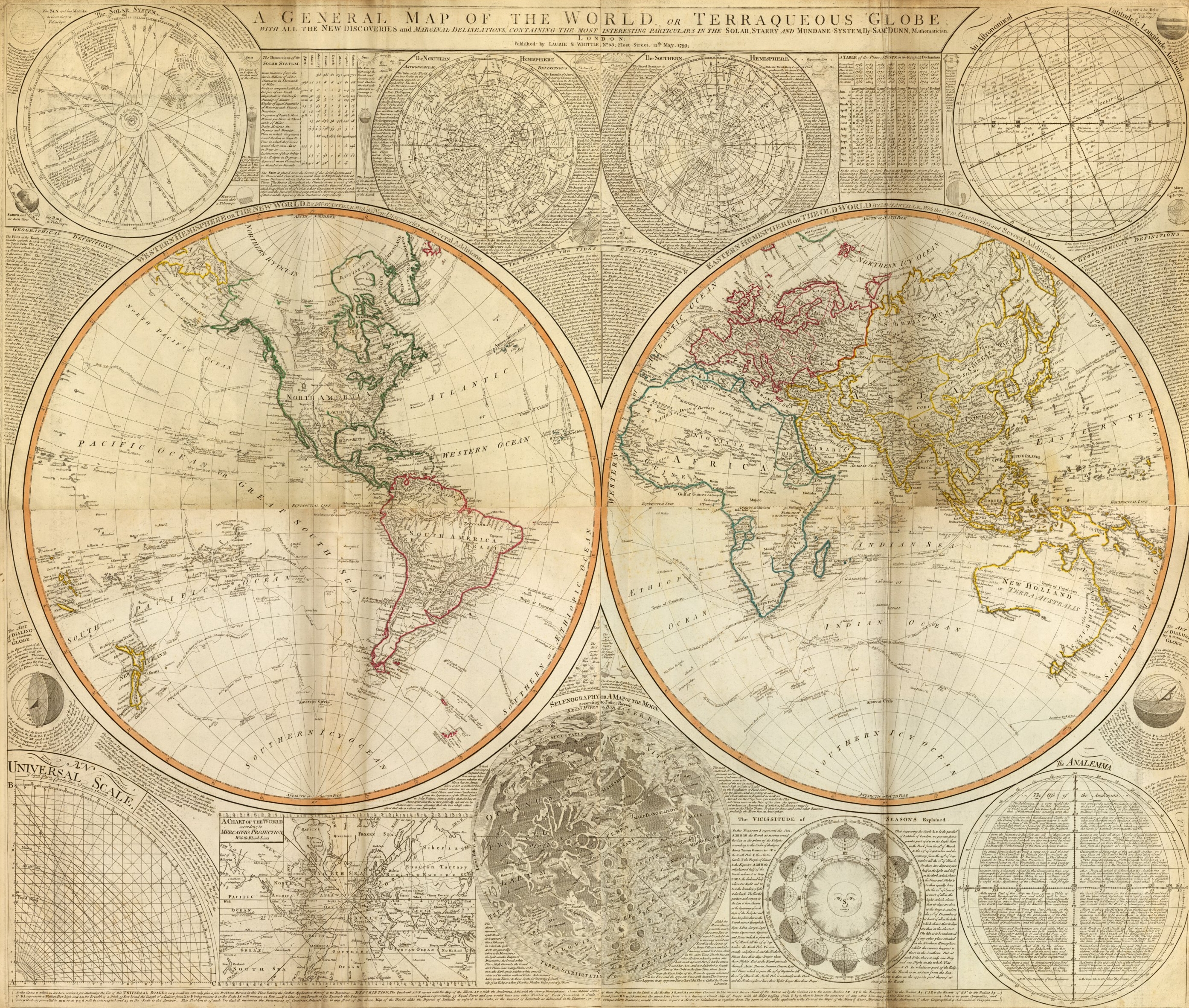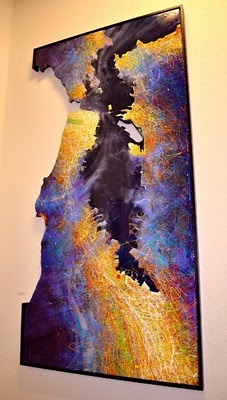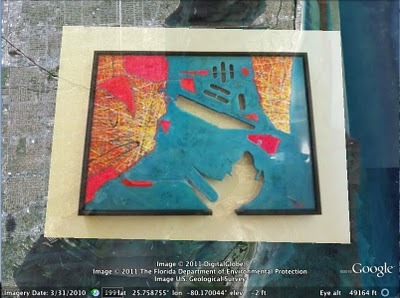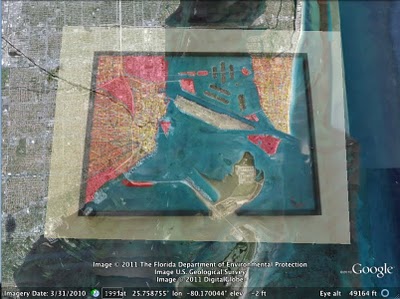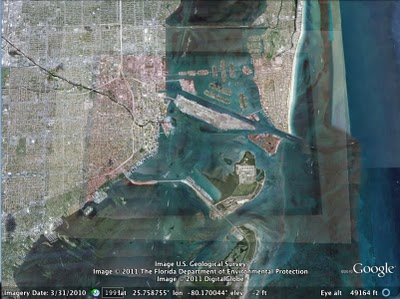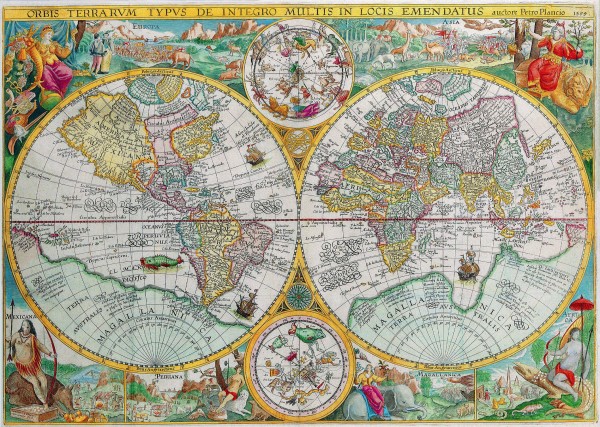Jean Baptiste Bourguignon- A general map of the World or terraqueous globe with..
Author: Anville, Jean Baptiste Bourguignon d, 1697-1782; Dunn, Samuel; Riccioli, Giovanni Battista; Robert Laurie &James WhittleDate: 1799Short Title: Composite: World.Publisher: Laurie & Whittle LondonType: Composite MapObj Height cm: 105Obj Width cm: 124Scale 1: 43,000,000
Note:Digital composite of north and south halves of hand colored engraved map. Relief shown pictorially. Contents: Western Hemisphere or the New World by Mr. d’Anville, with new discoveries and several additions — Eastern Hemisphere or the Old World by Mr. d’Anville, with the new discoveries and several additions. Ancillary maps or charts: The Solar System — The Northern Hemisphere — The Southern Hemisphere — An astronomical latitude & longitude analemma — An universal scale — A chart of the World according to Mercator’s projection, with the rhumb lines — Selenography or A map of the Moon according to Father Riccioli — The vicissitude of seasons explained — The analemma. Printed on 4 sheets; joined as 2.
World Area: WorldSubject: Celestial
Full Title: (Composite of) A general map of the World or terraqueous globe with all the new discoveries and marginal delineations, containing the most interesting particulars of the solar, starry and mundane system, by Saml. Dunn, mathematician. London, Published by Laurie & Whittle, No. 53, Fleet Street, 12th May, 1799.
The Art of Maps: Europa Delineata juxta Obfervationes Excellorum – Vindel 1760
The Art of Maps: PIRI REIS MAP
The Art of Maps: Map of Europe from Atlas sive Cosmographicae by Gerardus Mercator (1595)
The Art of maps: John Speed: Asia with the Islands adioyning described, the atire of the people, & Townes of importance, all of them newly augmented . . . 1626
The Art of Maps:Johann Baptiste Homann [California as an Island]
The Art of maps:Matthias Quad – Map of North America 1593
The Art of Maps: Americae Nova Tabula
Sightseeing Map Locations Bulgaria
The Art of Maps: CORNELIS DANCKERTS Nieuw Aerdsch Pley MAP
